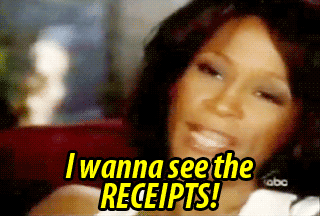If it’s too good to be true, it probably is.
Most people would agree there was nothing good about the “news” of Planned Parenthood selling parts of aborted fetuses, a video that spread like wildfire on Facebook and Twitter this week. It did more than cause a major public relations headache for a reproductive health organization—one that’s long been subject to attack for performing abortions, even though they provide a variety of essential services. The faux news story prompted needless flame wars and did nothing to enrich an ongoing conversation about abortion access.
Even though reports have indeed verified what the video showed instead—a conversation about Planned Parenthood’s organ and tissue donation process to research facilities—the damage has already been done. Misinformation continues spreading like wildfire, and the people who took the time to evaluate claims about the video have been empowered to help clear things up.
It’d be great if everyone were armed ready to sniff out misinformation when it lands on their news feeds. Instead, most people eat directly from the palms of publishers, behaving exactly as propagandists, hoaxers, and lowest-common-denominator content farms hope they will—that readers will emotionally respond to a carefully packaged headline, teaser, and image, prompting them to hit the “share” or “retweet” button.
But before unwittingly spreading bad information, practice discernment and consider these key questions:
1) Is the news source credible?
If a U.S. Senator could fall prey to a false online news report and share it with their followers, imagine how much easier it could be for the average citizen. While reading (and evaluating) news stories on the Internet, users should be mindful of where they’re getting their information, particularly if the organization has an expressed, unapologetic bias towards a specific ideology.
As the Daily Dot’s Dell Cameron reported on the Planned Parenthood controversy, “Arizona Sen. John McCain (R-Ariz.) took to Twitter on Monday afternoon to spread an article featured on the conservative website Daily Caller, which characterized the video as evidence that Planned Parenthood ‘[sells] the body parts of aborted babies, in some cases using an illegal partial-birth abortion procedure.’” And an article by the Blaze, a website founded by former Fox News host Glenn Beck, Cameron noted, “claimed that Nucatola had been ‘caught on tape selling the body parts of aborted children.’”
While the Daily Caller and the Blaze may be trusted sources for some, they’re not exactly at the same level as the Associated Press, the New York Times or other publications that have consistently published credible, accurate information with their readers. Indeed, many digital news sites are still establishing their reputations, which makes it all the more important that a news outlet dedicated to producing quality journalism practice their own verification and fact-checking process before publishing a story.
2) Who wrote the story itself?
Sometimes the byline says it all. If a story was written by the likes of a Gavin McInnes, there’s a good chance the content will be misogynistic or transphobic. And, likewise, if the news is being brought to you by that “Johnson” character, who Twitter banned for harassing and doxing others (all in the name of advancing an ostensibly conservative ideology), one might reasonably question his motives.
Don’t be afraid to evaluate what the author has previously written and check whether or not their stories have been subject to controversy for requiring sweeping corrections or for their extreme partisanship.
3) How do the sources and facts presented check out?
Most any publication worth their salt has editors, fact checkers, and other processes that ensure each story is factually accurate, based on the best possible information they have by press time. An earnest, smart journalist is willing to avoid making sweeping claims or assertions without the information to back it up. Even further, the journalist—and even their organization—would be ready and willing to admit what they don’t yet know, especially in the case of a breaking news story or during a police investigation.
If a story has links, click on them if you’re unsure about the facts; they’re included to help readers process the information. If a story doesn’t have at least three sources—people interviewed, research data, public statements, tweets, links, and the like—ask yourself: Where are the receipts?
4) Who shared this with me?
As with anything, consider the source. Sometimes the biases of individuals, organizations, and news publications will affect what’s shared with their channels and what isn’t. Most people would evaluate a story shared by a major daily newspaper differently than, say, the Facebook page for Life News, an organization that has compared abortion to slavery. One is an established publication that may make an occasional error or lapse in judgment but usually gets the story right. The other has an ideology to advance—and may do so even if it compromises their intellectual integrity.
However, don’t fall into the trap of your own confirmation bias. Even if your socially conscious friend shared yet another article about racism in American policing, that alone isn’t enough to verify the validity of the information itself. Striving to not be racist is a worthwhile goal. But it’s possible to disavow racism and still get some of the details wrong.
5) Are these claims outlandish or inflammatory?
Sometimes, the most absurd stories are indeed true—like the February chase for llamas that escaped in Arizona. But organizations like the Washington Post, CNN, and Fox, as shocking as it may sound, had their folks on a story that was as much of an oddity as it was chuckleworthy. But sometimes, the major networks and daily papers don’t have the resources to verify and report about that outrageous video, photo, or claim you saw spreading like wildfire on the Internet.
That’s where sources such as Snopes.com, PolitiFact, and HoaxBusters—among many others—can help clear things up, in the meantime.
6) Am I maintaining healthy skepticism?
In grad school, one of my professors at Northwestern’s Medill School of Journalism told the reporting class, “If your mother says she loves you, check it twice.” It was her kind way of reminding us to ensure we were properly scrutinizing the information as we gathered it, asking the tough questions and not being afraid to dig for the answers when necessary.
But what she, even as a mother, imparted was something that goes beyond the nature of the job—people shouldn’t be overly eager to take things at face value. Sometimes, the truth is really in front of you, and it’s as clear as day. Other times, a little doubt doesn’t hurt. It can only help.
7) Does this story simply confirm my own biases?
While writing an op-ed about Paula Deen’s recent Twitter “brownface” controversy, I went into the process ready to sound off on Deen’s history of racism, based on the initial online outcry. But my better judgment remembered that what’s seen on a timeline doesn’t always paint a full picture. Indeed, the photo in question was shared not by Deen, but by a hired social media manager, who was fired after the error; the photo itself predated the 2013 media circus around Deen’s racist behavior. In the years since, she’s since apologized profusely and attempted to be accountable.
I didn’t have to give Deen a complete free pass, but I had to be fair. Even as a black, queer, non-binary individual, I have to remember that the way I, and others, process news will be based on our own social locations. When one experiences forms of racism on an almost daily basis, it can be easy to readily accept the news of yet another celebrity’s ignorant, racialized antics. The same could be said for people who have different identities or life experiences.
We don’t have to apologize for who we are, or put ourselves on the shelf when evaluating a story, let alone writing one. But by being aware of how our subjective reality may limit our perception, we can ask the right questions and pause when necessary to verify or clarify the things we share with others.
Derrick Clifton is the Deputy Opinion Editor for the Daily Dot and a New York-based journalist and speaker, primarily covering issues of identity, culture and politics.
Illustration by Max Fleishman


